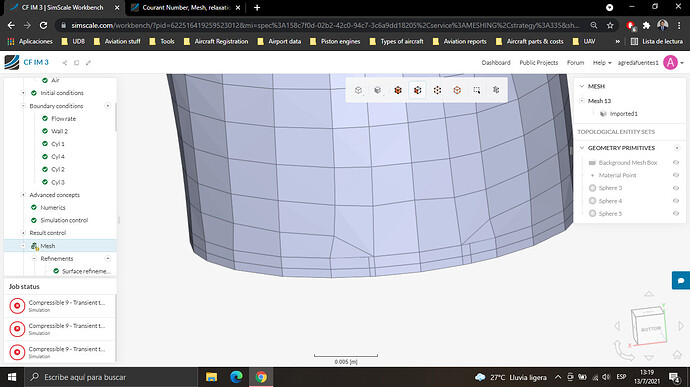@RicardoParis Yes, you’re right it’s diverging at the outlets but how do I fix that, Do you think this is the problem? (screenshot)
And answering your question, the Intake Manifold works with pressure pulse based in the fire order so, I did the pressure pulse P vs Time according to the plenum pressure near 145 kPa and the ambient pressure near 1 atm but due to vacuum pressure drops a little I wrote 93 kPa, the pressure pulse it’s a representation of the real pressure behavior, so If i make a table input for mass flow rate to velocities outlets I will avoid the design goal that is the velocity because if I make that i will chain the behavior.
Also I didn’t find the option of potencial foam initialization in simulation control I think It’s no more available to community plan.
I did some test in transient test 36, 37 and 38, with a coarse mesh level 1, but diverged in the outlet, the last one I tried with a courant max of 10k. But It seems that the problem maybe is the mesh ![]()
